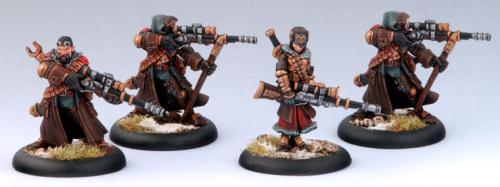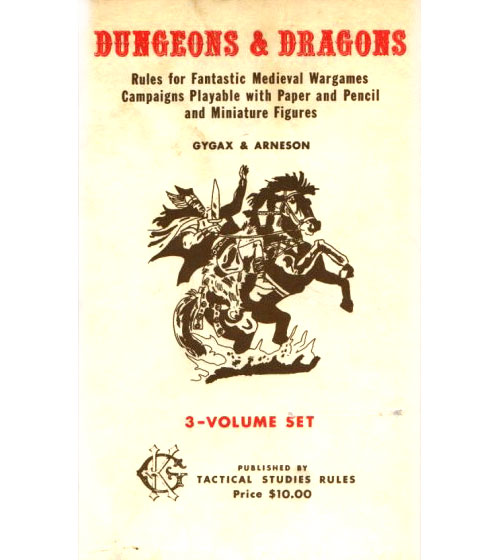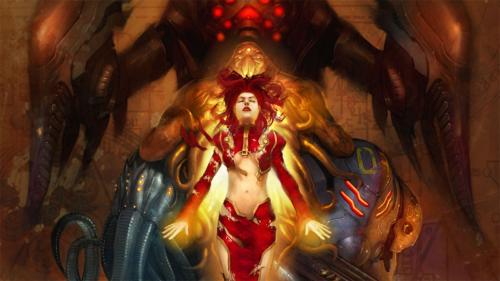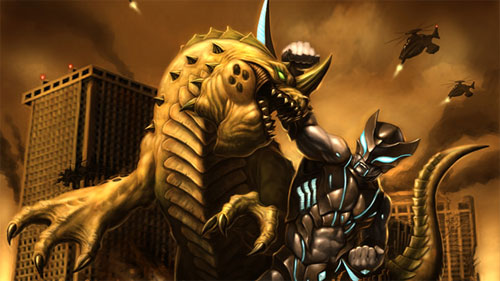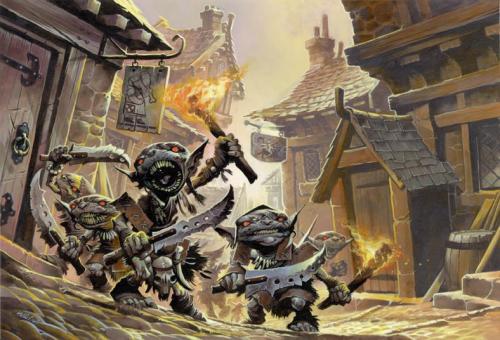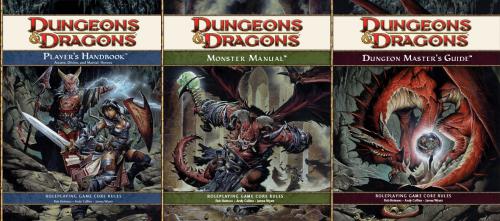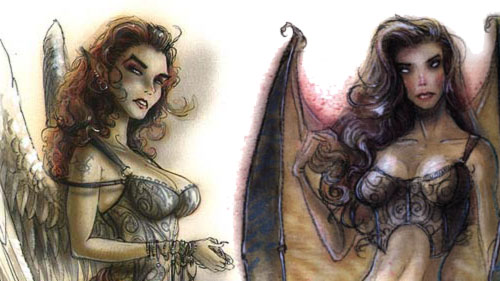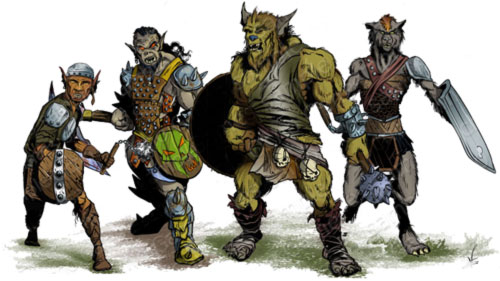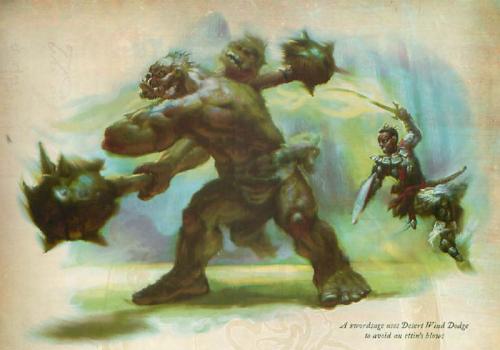
My weekly RPG group has recently reverted to a Forgotten Realms game, complete with the stereotypical traveling-circus nonsensical party composition (an Ogre, two Humans, a Gnome, and a Halfling), and I’ve taken it upon myself to give the fabled Tome of Battle, the Book of Weeaboo Fightan Magics a shot with a Silas Coldwater, Crusader of Tyr.
In broad terms, the Tome of Battle seeks to make melee combatants more interesting to use than simply Move Action, Attack with the occasional Full Attack, 5-foot-step. The kinds of tactical options available to the typical Fighter or Barbarian character have generally involved wading hip-deep into rules that involve attacks of opportunity, special modifiers, and contested die rolls (grapple, trip, bull rush, and sunder: I’m looking at you, here). Basically they bog things down and tend not to be terribly useful against Gargantuan critters with more than two legs. Tome of Battle introduces three new character classes — basically just Fighter variants — that take advantage of a new set of rules for Maneuvers and Stances.
Maneuvers operate a lot like spells in that they have minimum level requirements. In the case of my Crusader, I can make an extra-powerful “Mountain Hammer” attack every once in a while, or use Stone Bones to gain temporary damage reduction, or a number of other flashy tricks. Stances are special maneuvers that are pretty much always on. Silas generally operates in Iron Guard Glare stance, which grants an armor class bonus to all his allies (but not to himself) against any opponent that Silas threatens.
The Tome of Battle is considered one of the books that 4th Edition Dungeons & Dragons will be drawing greatly from; it was an experiment in some new ways of handling tactical encounters that works pretty smoothly. It also shows a bit of how the Wizards of the Coast folks would like to handle character advancement going forward. They wanted to make it so that players would have interesting choices to make every time their characters become more accomplished. For a Fighter, character progression meant a small number of skill points, often used simply to reinforce aptitude in areas that character was already good at, the Fighter would get some more hit points, and his base attack bonus would go up. Yawn. Every second and every third level, the Fighter would get to select a new feat. This is the chief way in which a Fighter would differentiate himself, the primary mechanism by which he’d be cool.
For the Crusader, they mix this up a bit. To illustrate, I’ll describe the decisions I got to make on my way to 6th level.
- 1st: Any character has a ton of choices at 1st level. What’s the basic character concept? What race, class, class abilities, skills, equipment, etc help demonstrate that concept? I went with a polearm-wielding Crusader with Combat Reflexes and a smattering of maneuvers like Vanguard Strike that help his buddies do their jobs better.
- 2nd: Here a Fighter would get a bonus feat. A Crusader instead gets a second stance and a class ability that helps with saving throws. Silas picks Martial Spirit, which lets him heal allies a little when he hits an enemy in melee.
- 3rd: Everybody gets a feat at this level, and a Crusader gets a new maneuver. 3rd level is when 2nd-level maneuvers are available, so I take Mountain Hammer, which lets me do an extra 2d6 damage, bypassing damage reduction and hardness.
- 4th: Everybody gets a stat improvement, a Fighter would get a bonus feat, and a Crusader gets to upgrade one of his old maneuvers, swapping it out for a new one. 2nd level maneuvers are pretty cool, so I swap out a 1st level one that I really took as a placeholder, and grab another tasty 2nd level maneuver.
- 5th: This is a dead level for Fighters, but when Clerics and Wizards get 3rd level magic. Similarly, Silas got a new maneuver at up to 3rd level. I get him White Raven Tactics, which allows an ally to go at exactly one initiative after him, even if that ally had already acted that turn. This lets the Fighter in the party get two full-round actions, sometimes before our opponents even get a chance to act. Neato.
- 6th: Everybody gets another feat, Fighters get two, and a Crusader gets to trade out another Maneuver (throw away an old, stale one for a new, hot one). I could trade out Crusader’s Strike (which lets me heal 1d6+5 to an ally when striking a foe) for Revitalizing Strike (which lets me heal 3d6+6 — eventually 3d6+15 — when striking a foe), a clear upgrade for something that’s nice at low levels but utterly unimpressive at mid-level or high-level play. Or perhaps I’d be better served taking Defensive Rebuke, which forces any opponent Silas strikes to target him or provoke an attack of opportunity (handy with Combat Reflexes and a reach weapon). Decisions, decisions. There are several other options as well.
That doesn’t go into the various interesting class abilities. Basically I get to make real decisions in mid-combat without having to muck through a massive spell list. Nice. The other Tome of Battle classes, the Sword Sage and Warblade, have their own distinct flavors, differentiated by the palette of maneuvers available to them, their class abilities, and the means by which they get to refresh their maneuvers.
A lot of the descriptive text is the kind of poorly-conceived high fantasy oriental tripe that I expect from Dungeons & Dragons, the kind of stuff that leaves me incapable of running a serious game in Greyhawk or the Forgotten Realms. That said, it’s an interesting addition to the way that D&D operates. Separate it a bit from the half-baked mysticism and I think they’re really on to something here. I can only hope that their approach to the 4th Edition Fighter is heavily inspired by the game mechanics, if not the fluff, of this book.
